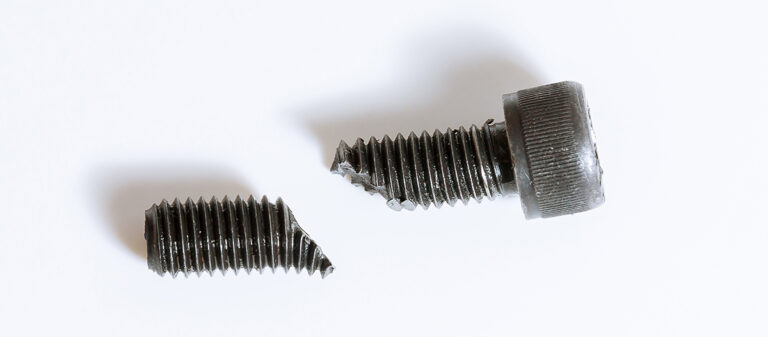When it comes to security screws, performance isn’t just about material or drive type – it’s also about how well the screw holds up under stress. Whether you’re fastening critical infrastructure, mounting safety equipment, or securing commercial fixtures, it’s essential to understand why load testing security screws matter. This process reveals a screw’s strength and reliability in real-world conditions.
What Is Load Testing?
Load testing security screws evaluates a screw’s mechanical strength by subjecting it to different types of force. It simulates stress scenarios to determine whether the screw can endure tensile (pulling), shear (sideways), and compressive loads without deforming or failing. Think of it as stress testing for fasteners. Under controlled conditions, manufacturers, engineers, and inspectors use this method to ensure that screws:
- Meet relevant safety standards.
- Suit their intended applications.
- Maintain performance in demanding environments.
In the case of tamper resistant fasteners, load testing also verifies that added security features don’t compromise mechanical strength.
Why Load Testing Screws Matters
In high-risk environments, failure isn’t an option. Load testing supports:
- Public safety in buildings, transportation, and infrastructure.
- Regulatory compliance with construction, and industrial regulations.
- Product durability, especially in situations involving vibration or tampering.
- Reduced liability by verifying performance under anticipated stress.
For example, a security screw securing a surveillance camera on a rail platform must resist vibration, weight, and accidental impact without loosening or snapping.
Types of Load Testing for Screws
Each testing method simulates a specific real-world force. Here are the most common types:
1. Tensile Load Testing (Pull-Out Strength)
Purpose: Measures the force needed to pull a screw out of its material.
Test Method: A screw is inserted into a test material (wood, steel, plastic, etc) and a tensile machine applies upward force to the head of the screw until the screw breaks free or fails.
Why It’s Important: Critical for overhead applications like lighting or signage. It determines holding power and thread engagement in a specific substrate.
2. Shear Load Testing
Purpose: Evaluates the screw’s resistance to sideways or lateral forces (force applied across the shaft).
Test Method: The screw is mounted between two blocks, and a lateral load is applied until deformation or failure occurs.
Why It’s Important: Essential for applications involving brackets, panels, or hinges, where sideways forces dominate.
3. Torsion Testing (Torque to Failure)
Purpose: Measures the twisting force (torque) a screw can handle before its head or shaft breaks.
Test Method: A torque tool turns the screw until breakage. Failure may occur at the head, shaft, or drive recess.
Why It’s Important: Verifies the strength of the screw head and drive type, especially important for security screws with custom recesses. Ensures screws can be installed or removed with stripping.
4. Proof Load Testing
Purpose: Ensures that the screw can endure a predefined maximum load without permanent damage.
Test Method: A calculated load is applied based on the screw’s size and grade. The screw is inspected afterward to confirm it hasn’t stretched, bent, or cracked.
Why It’s Important: Common in certifications, this test confirms a safety margin under expected loads.
5. Fatigue Testing (Cyclic Load Testing)
Purpose: Assesses durability under repetitive stress.
Test Method: Screws undergo thousands, or even millions, of stress cycles to simulate long term use. Test continues until failure occurs, or a set number of cycles is reached.
Why It’s Important: Crucial in transit, machinery, and public installations where repeated load is unavoidable. Useful in applications exposed to vibration, traffic, or mechanical movement.
6. Pull-Through Testing (Panel Application)
Purpose: Measures the force needed to pull the screw head through its attached material.
Test Method: After installing the screw into a panel, upward force is applied until the head breaks through.
Why It’s Important: Especially relevant when fastening soft or lightweight materials like composites or plastic.
Factors That Influence Load Test Results
Several variables affect a screw’s performance under load:
- Material Type (steel, stainless, alloy, coated)
- Thread Design (coarse, fine, self-tapping)
- Length of Thread Engagement
- Installation Torque
- Substrate Material (eg metal vs MDF vs concrete)
- Environmental Exposure (temperature, corrosion, fatigue)
What to Look for in Load Test Reports
When reviewing load test results, ensure they include:
Testing Standards: Was the test conducted to ISO Standards, or similar benchmarks?
Independent Verification: Third party reports offer greater credibility.
Environmental Conditions: Were tests performed in controlled environments?
Units of Measure: Expect results in Newtons (N), kilonewtons (kN), or Newton-metres (Nm), the industry norms.
Final Thoughts
Security screws do more than prevent tampering – they bear loads, resist stress, and contribute to safety. Load testing isn’t just a checkbox; it’s a validation of performance under real conditions.
In larger production environments, manufacturers also apply these tests to samples across each production batch. This practice, known as batch testing, ensures every box of screws performs to the same mechanical standard – providing reliability at scale, not just in the lab.
Load testing security screws matter. Whether you’re supplying screws for critical infrastructure, public spaces, or vandal resistant fixtures, load testing, and consistent results, mean your installations stay secure and standards compliant.
Need help choosing a screw that’s been load tested and rated for your application?
Contact our expert team today on 1800 776 565 – we’ll help you find the perfect fastener that’s strong, secure, and certified to perform.
Secure Your Assets with Sentinel Group Security Screws.
Choose Sentinel Group Security & Customised Fastening Solutions.




